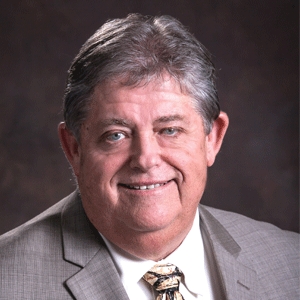"How do we provide medical care to a man flying in a space capsule thousands of miles above us?" It was some form of that question that began the technology that we now refer to as telemedicine and which is evolving into telehealth. With changing technology and laws at both the federal and state levels, telemedicine is starting to find its way into a more traditional path and offering in our society. It is becoming a new approach to the older version of a house call. This is a great relief for the areas of our country who do not have physicians or the level of specialties that reside in our major metropolitan areas. Large healthcare organizations to individual practice groups are starting to embark on this journey, but it can be one fraught with potential failures and frustrations if not given careful thought. When an organization embarks to add an offering of telemedicine to its list of services, there are some considerations which should be given attention: physician engagement, selection of offerings, technology approach, and method of execution.
Lynn Gibson, VP/ CTO, Christus Health

"There can be no telemedicine program without engaged and supportive physicians."
There can be no telemedicine program without engaged and supportive physicians. This not only includes physicians to directly participate in the program, but those whose service may be directly impacted. For example, should an offering of tele-cardiology be considered, will the cardiologists in practice within the organization participate or be supportive or will they see it as a threat to their own practice
The state and local insurance offerings may or may not be supportive of reimbursement of services when rendered outside a personal and direct touch. Legislation such as HITECH and ARRA have created support for telemedicine programs, but states are still the key holder of insurance. This can be a key to physician engagement.
Telemedicine to some can be seen as a simple video conference between a general practitioner receiving a consult from a specialist. To others it represents specially designed room with complex equipment where local medical technicians connect with a specialist some hundreds of miles away via a video screen who performs the procedure or conducts the office visit while receiving reports and response at their computer. It could be a connection directly with a patient in their home over their personal computer. Consider the new mother who has little local family support is sent home with her first child only after a few nights, the child contracts colic. Imagine the mother's feeling of support and comfort if at 3:00 AM, she could connect with an inexpensive video camera on her computer back to the maternity staff who could guide her back to a hopeful calm child.
The concepts of offering more offerings that are complex have greater challenges to address. Theoptions are as varying as the methods. One group may have geographic challenges in providing care, but through a telemedicine approach find a way to offer their specialists to areas in their covered areas. In a different market, others may struggle with a competitive environment and want to reach a new customer base. It is at this point many organizations become frozen with their plans. Consider what the greatest need in the community and what would have the greatest support from the physician community. Begin with an offering that would provide an initial success of adoption.
Physician Engagement
Selection of Offerings
Technology Approach
Technology is generally at the heart of most offerings, but in reality today is the simplest of the issues to address. In very recent history, vendors have offered elaborate telemedicine carts customized to address the needs of a given specialty. These carts generally came with a very high price tag and had limited use. Today, providers are understanding more of what they desire and what is needed and vendors of telemedicine carts are learning the need to provide a more universal cart design which based upon a modular design can be utilized for multiple services with limited
manipulation of the cart itself. The cart maybe an obstetric device in the morning, only to be witch to cardiology device in the afternoon.
The once concern of the in-house network becoming a limiting factor is moving to the wayside as improved network technology and methods of video transmissions and provisions of broader network bands in most communities move the issue to the side for the majority of interested parties. For those still in need, the federal government has instated programs to promote the establishment of services to those underserved areas.
Once a supportive physician body is in place and service(s) to be offer have been determined, it is now a question of how to execute on the decision. A number of different groups are now offering to provide
telemedicine services to healthcare organizations. Some general thoughts with using outside providers include their
willingness to accept the credentialing process; their willingness to use existing technology versus their own tools; their agreement to document in the existing electronic medical record; open to working under existing contractual payments and collaborative billing. Other organizations are creating dedicated locations or rooms which are staffed by professionals. This offer generally requires a contractual arrangement with physicians to insure their income. Both approaches have benefits, but it will be the culture of the organization to know the best fit.
It is doubtful that anyone at NASA ever considers they would be changing the face of medicine some fifty years later, but those early days for the concerns of our astronauts are today evolving the everyday application to effective and more convenient patient care to all.
Method of Execution

Considering a Telemedicine Program
Lynn Gibson, VP/ CTO, Christus Health